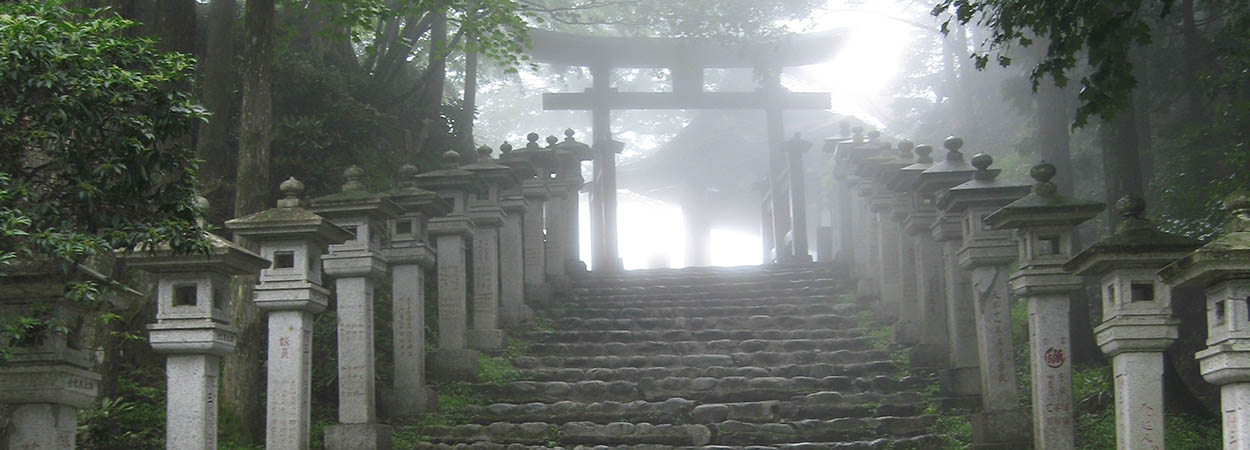
- Head and research: Bernhard Scheid
- Field: Japanese Studies
- Running period: since 1997
- Funding: FWF (1997–2001), ÖAW
Project description
The historical importance of Japanese Buddhism can be well seen by the fact that Buddhism functioned as a sort of state religion already in the Nara period (8th cent.) and is also reflected in many literary and pictorial sources of all kinds from the premodern period. Yet within this framework of Buddhism, indigenous deities (kami) co-existed side by side with Buddhas, as well as with deities imported from India, China and Korea. How did this syncretic mixture of religious beliefs and practices relate to Shinto? Why do we speak of two main religions in Japan, Buddhism and Shinto? Since when has Shinto been perceived as a distinct religious form? Was there any notion of a contradiction between indigenous and foreign beliefs? Was there a conflict between Buddhism and Shinto? These are the central questions that are being dealt with from various perspectives in the individual studies described below.
The following sub-projects on this topic are listed according to the chronology of their being initiated. In addition, a third-party funded sub-project is being undertaken at the IKGA: "Shinto-uke: Religiious controll via Shinto shrines".
Subprojects
Mythology
The myths in Japans oldest chronicles, Kojiki (712) and Nihion shoki (720), have been traditionally regarded as reflections of ancient oral traditions. Recently, however, scholars have begun to cast doubt on this assumption and to look for possible “invented traditions” in the context of early Japanese state building, a process that coincided with the codification of myths.
Literature
- Bernhard Scheid (2016), "Sie stach sich in den Schoß und verstarb": Zwei seltsame Todesfälle in den kiki-Mythen. In: Birgtit Staemmler (ed.), Werden und Vergehen: Betrachtungen zu Geburt und Tod in japanischen Religionen. Münster: Lit Verlag, 95–114.
Hachiman, metamorphoses of a Japanese deity
The Japanese deity Hachiman surfaces in the early eighth century in Kyūshū, in the southwest of Japan’s archipelago. Around 750 he becomes the guardian deity of the newly erected Tōdaiji (famous for its giant Vairocana Buddha) in Nara. A filial shrine for Hachiman is founded in the precincts of the temple. This marks the beginning of Hachiman’s ascent to one of the most popular deities of Japan. He becomes not only an ancestor deity of the Tenno, he also figures as an oracular deity, a “Great Bodhisattva,” a guardian of the samurai, a protector of Japanese pirates (wakō), a “deity of war,” and finally as a local deity of numerous rural villages. Today more than 20,000 Japanese shrines – about one fourth of the total number of shrines in the country – are dedicated to Hachiman. Nevertheless, Western research on Hachiman has been rather rare and unsystematic. This is probably due to Hachiman’s heterogeneous nature, being as much a deity of Buddhism as of “Shinto.” This project aims at an analysis of Hachiman’s diverging aspects, their relationship to different religious and social groups, and their diachronic development. This research is being based on historiographic, literary, and pictorial sources. The timeframe roughly covers the premodern period (until 1868), focusing on legends from the medieval period.
Shinto and esoteric Buddhism
Since Kuroda Toshio coined the term kenmitsu taisei, referring to a system of exo- and esoteric teachings that formed the dominating discourse of the Japanese medieval period, the "esoteric" part of this system, i.e. Japanese Esoteric Buddhism (aka. Tantric Buddhism or Vajrayana) has received growing attention among the scholarly community. "Esoteric Buddhism" is a common translation of the Japanese term mikkyō (Chin. mijiao), which literally means nothing other than "secret teachings." In this project the question was raised as to what the secret of these "secret teachings" actually consisted of and how it worked as a technique of cultural communication, not only within Buddhism but also within kami worship and several non-religious spheres. To discuss such questions, an international symposium was organized in 2004; its proceedings were published in the edited volume The Culture of Secrecy in Japanese Religion.
Yoshida Shinto
By investigating Yoshida Shinto, which began in the 15th century, this project aims to elucidate the history of Shinto in the context of a specific historical example: Yoshida Shinto can be regarded as the first coherent dogmatic and ritual religious system that called itself Shinto and regarded itself as different and independent from Buddhism. In due course "One-and-Only" Shinto (Yuiitsu Shinto) was the name Yoshida priests usually used to refer to themselves. At the same time, Yoshida Shinto shared the common opinion that all religious and philosophic systems of Asia were ultimately "one," i.e. originating from the same idea. This led Yoshida Shinto into a permanent conflict: while pretending to act according to fundamentalist, purist principles, the outcome rather resembled the pluralistic tolerance common to most Japanese religions. Yoshida Shinto is therefore an important but hitherto neglected link between the all-pervasive world view of medieval Buddhism and the emergence of “Pure Shinto” in the Edo period.
Literature
Bernhard Scheid, 2001
Der Eine und Einzige Weg der Götter: Yoshida Kanetomo und die Erfindung des Shinto. (BKGA 38.) Wien: VÖAW, 2001 (download [open access] or order online).
